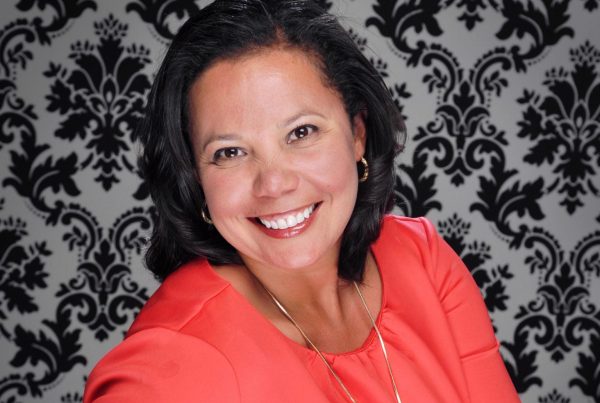
I recently had coffee with a nursing student just finishing her senior year at a local baccalaureate program who was struggling. She was extremely stressed and overwhelmed by the amount of content that her current professor was expecting her to master for the last three exams.
This professor repeatedly told the students in class, “You need to know content!” This student responded to the professor, “What do you want me to know about this content?”
But is nursing education all about “knowing the content?” and expecting students to master the ever growing amount of information in textbooks? Or is it about obtaining a DEEP knowledge of the most important content that is essential to provide safe care?
Lessons from an Iceberg
I chose the metaphor of an iceberg in this blog post photo to graphically illustrate the essence of our ultimate objective as effective nurse educators…DEEP learning of what is MOST important.
What is above water is only the “tip” and represents only 10% of the mass of an incredibly large iceberg. 90% cannot be seen but represents the hidden depth that represents the entirety of the iceberg.
Our goal is to have students not only understand the “tip” of the most important information, but the entirety of this content where most of it is hidden, but essential to know.
Example of “tip” Knowledge
An example of this DEEP iceberg knowledge that is needed for practice relates to pharmacology. Most students can identify the pharmacologic classification of atenolol as a beta blocker, but this is only the 10% “tip” of knowledge needed to be safe in practice.
Ask this same student to state in their own words what a beta blocker is blocking, and for many this DEEPER (90% below the water) level of knowledge that represents the most important essence of pharmacology for this drug is not known.
If it is your priority to “cover the content” and expect students to know the majority of what is covered in a chapter of textbook readings or in your slide presentation,students will likely obtain only a superficial “tip of the iceberg” knowledge of your content.
This level of knowledge will NOT readily translate to the deep mastery of knowledge that is needed to apply to the bedside where it matters most.
As nurse educators, never lose sight that nursing is a practice based profession where all that is taught must translate to the bedside of patient care so students who are adult learners can readily identify the relevance and importance of your content.
Three Simple Strategies to Deepen Student Learning
Though nursing textbooks and the body of knowledge of nursing science continues to grow each year and with each edition of textbooks, it is the wise educator who intentionally filters this ever growing amount of content and makes it a priority to DECREASE the amount of content that students read and are expected to know. (See my past blog on the importance of filtering the content)
As a result, students will obtain the needed DEEP understanding to readily transfer content knowledge and apply it to the bedside.
Remember that a universal characteristic that Patricia Benner identified back in 1982 with her novice to expert theory is that because novice nursing students have little to no clinical experience or context, they will see EVERYTHING, including the massive amounts of content in a textbook as equally relevant.
What follows are some practical strategies that any educator can take today, to accomplish the needed DEEP learning of what is MOST important or relevant of what you teach:
1. Determine what content is most important.
Use other faculty in your team, especially those that are new educators who are most recent in practice. These educators have a lens of current clinical practice to help guide what is most important to the bedside.
Include clinical adjuncts in this needed discussion as well. They too have this lens of current practice, and their perspective is needed to guide what content is most relevant to practice. Adjuncts tend to be outside the bubble and will appreciate being included as part of the team which will promote needed engagement and team building!
2. Identify the specific pages that are NEED to know.
Do NOT make the entire chapter of the textbook reading “fair game” for the test. This well intended expectation will only hinder student mastery of most important content. Instead, once most important content has been identified, identify these pages in your textbook and make that the required reading as NEED to know, while the remainder of the chapter is “nice” to know but not required.
Maybe one of the reasons students don’t read the textbook before coming to class is that they are given too many pages to read and use lecture to guide what is most important? Identify the NEED to know pages and this manageable amount of content may promote student preparation for lecture.
3. Create study guide for your content.
Listen carefully to the heart cry of the student in the introduction…”What do you want me to know about this content?”
This statement is not unique to her, but to the majority of students in your program. Though there are always those students who have the ultimate motive for this question reworded as “What do I need to know to pass the test?” Though passing the exam is essential to each student’s desire to be a nurse, I believe that most students really want to be the best nurse possible and are looking to you as the educator to guide their learning as to what is most relevant to make this possible.
Though it may take extra time, once you have implemented step #1 by identifying what content topics are most important, this should be put in writing and then translated to a study guide that could then be incorporated in the syllabus for all content in your program.
Have a crucial conversation as a department and consider having all levels adopt this approach to student learning and create study guides and specific textbook readings for each content module in the program.
In Closing
It is no secret that students are often stressed and overwhelmed by the numerous demands that are placed on them by a difficult major such as nursing. But it is essential that each nurse educator reflect and determine if you are contributing to the stress of your students by the amount of content knowledge that you are expecting them to master.
Be a part of the needed transformation that is needed in nursing education to decrease the amount of content presented in your program and make “DEEP learning of MOST important” as a metaphor to guide all that you do in the classroom and clinical settings!
Comment question:
What practical steps have you as an educator undertaken to decrease the amount of content in your program?
If you are a student, what is your perspective about the amount of content in your program?Comment below and let the conversation begin!
Keith Rischer – Ph.D., RN, CCRN, CEN
As a nurse with over 35 years of experience who remained in practice as an educator, I’ve witnessed the gap between how nursing is taught and how it is practiced, and I decided to do something about it! Read more…
The Ultimate Solution to Develop Clinical Judgment Skills
KeithRN’s Think Like a Nurse Membership
Access exclusive active learning resources for faculty and students, including KeithRN Case Studies, making it your go-to resource.



